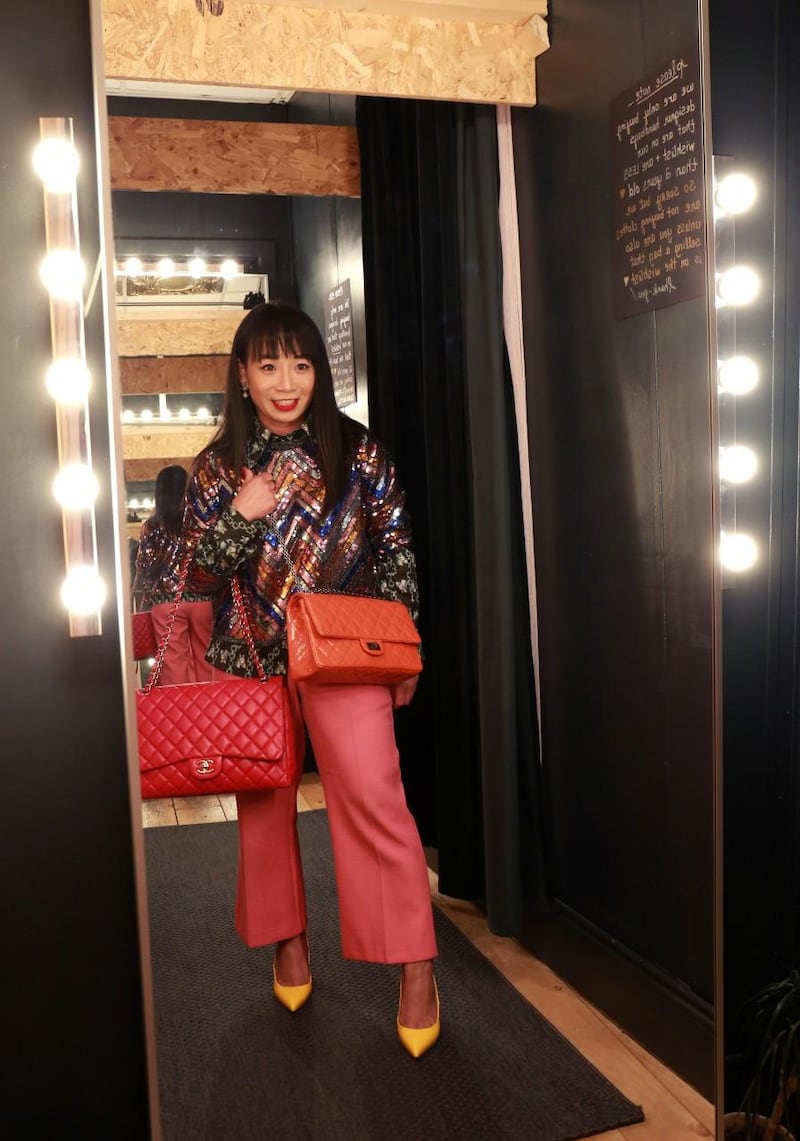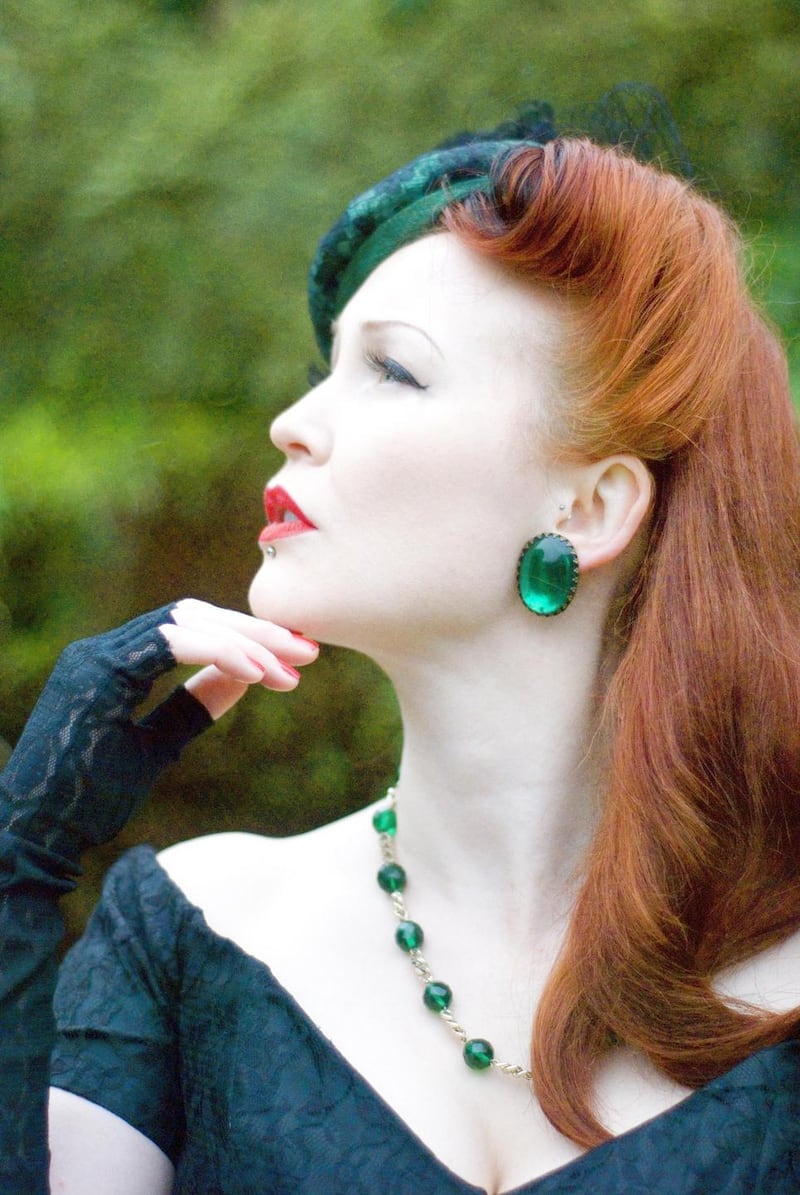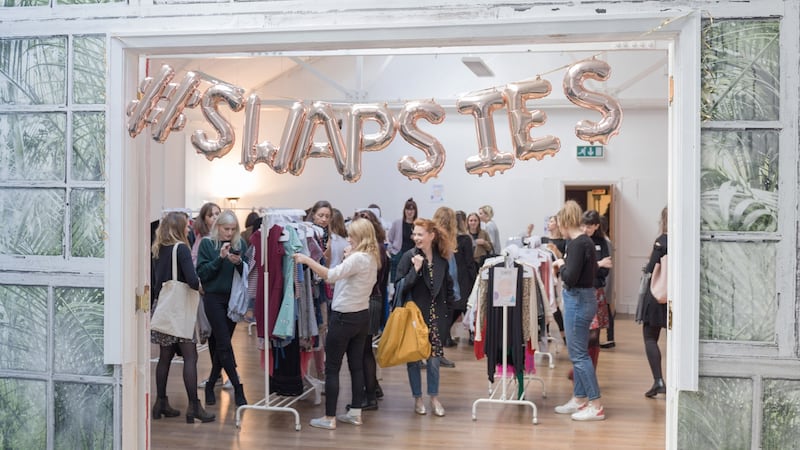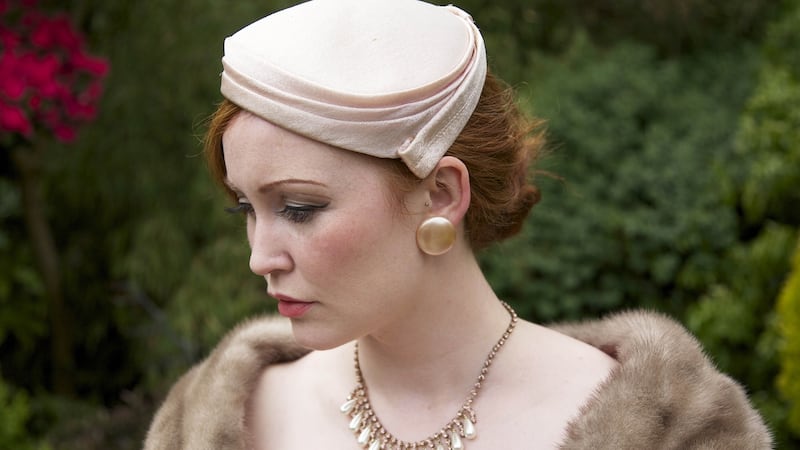A recent Kerry Taylor auction in London saw a John Galliano Incroyable coat sell for £65,000, a pair of Alexander McQueen Armadillo boots for £60,000, and a Christian Dior red cut velvet dress for £20,000. While way beyond the bank balances of most of us, these impressive sales point to the zeitgeisty rise in the popularity of pre-loved fashion.
Its enduring appeal? “The fact that nobody else at the party will be wearing the same outfit as you is key to the eternal appeal of vintage for fashion lovers who want to be unique. When you buy vintage wisely, you are more than likely to make a profit if you decide to resell,” explains the auctioneer,
Ella de Guzmann of Siopaella, Ireland's largest consignment retailer, which operates out of a shop in Temple Bar, agrees: "The financial value of buying second-hand is that, generally speaking, you have allowed someone else to pay the depreciation costs. I like to see it like car shopping: when you're buying a brand new car, the minute you drive the car you have already lost €3,000. The same principle applies to most clothing and accessories. Ninety-nine per cent of the time you will save money when you're buying second-hand."
Kerry Taylor also sells items for more modest price points; a Chanel navy quilted lambskin leather flap bag made £400, for example. They define vintage as "a garment that possesses age, beauty and great design".

But the lure of vintage these days goes further than just savings or standing out from the crowd. As the climate crisis deepens, there is swelling sentiment that too much clothing is being manufactured and consumed, with devastating consequences for the environment. The second-hand sector offers an alternative to fast fashion for conscientious consumers, who are turning to it in their droves - not only for environmental reasons, but because it also offers an opportunity to express their individual style, rather than follow relentless trends.
Research by GlobalData and ThredUp, the largest online thrift shop in the world, claims that the industry will grow by an estimated 15 per cent per year between now and 2022, when it will be worth more than $41 billion.
For the uninitiated, the second-hand marketplace is divided into antique (pre-1920s), vintage (after 1920 but before 1980), retro (mostly 1960s and 1970s) and second-hand (post the early 1980s). Vintage and antique garments are generally of better quality, rarer and more expensive than “second-hand” clothing, but both are experiencing increased demand from consumers in recent times.
Designers have always been inspired by vintage style
Prices at the luxury end of the resale market are soaring, indicating a renaissance in vintage style and second-hand couture, as those searching for unique pieces are increasingly willing to pay a premium for rare items.
Designers have always been inspired by vintage style, and increasingly so in the past 20 years. Alessandro Michele has recently perfected a look that draws heavily on a mash up of vintage, granny chic and eccentricity, which been responsible for reviving Gucci's fortunes. Likewise, Miucca Prada regularly creates clothing heavily inspired by the 1940s and 1970s. Looking like you have raided your mother's or even grandmother's wardrobe is now the epitome of cool.
Sandra Fitzgibbon of online retailer Vintage La Touche acknowledges that the fashion industry's propensity to look backwards feeds the interest in vintage style. "Since around 2000, the fashion industry [has tended] to look back to the '20s/30s, 50s/60s, and 70s/80s to provide inspiration for current looks. As a result, all these eras are in style – so customers can choose to dress in the era they love. Customers tend to love the era that suits their figure," she says.
“If you dress vintage from top to toe, you run the risk of looking like you have stepped out of a period drama. If you see a fabulous piece of vintage clothing or accessory, think about how you could incorporate it into the wardrobe you already have.”

Instagram has had a significant part to play in the shift to a more individual style among young consumers; power in the fashion industry has moved away from designers and brands towards influencers who break trends and provide inspiration to a new generation of fashionistas. Curating you own look is infinitely cooler than wearing head to toe from any label, and older clothing offers an alternative to high street fashion, which is often driven by identical trend forecasts and colour palettes.
Gail Kinsella of Ireland's oldest vintage store, Jenny Vander, which has been trading on Drury Street in Dublin since the 1970s, says that's one of the best things about buying vintage. "It's very different ... you're not going to meet anyone in the same thing. Even if you spend a fortune on a new designer outfit, you could easily meet yourself in it."
Kinsella is rigorous in her approach to stock, making sure everything she sells is clean and in good condition. “Everything that comes in here goes through my hands first. My dry cleaning bill is nearly as big as my rent. I repair a lot myself too.”
Over the years, Jenny Vander has counted many actresses, singers and creatives among its clientele. Florence Welch visited in August ahead of her headline appearance at Electric Picnic.
Another popular method of achieving a sustainable wardrobe refresh is clothes swapping. Clodagh Kelly started hosting clothes swapping parties as a student – now, she has taken the concept public with her Swapsies events, upcycling workshops and website, swapsies.com. She aims to provide an "online hub of information on where to shop in line with your values", be that "for human/animal or environmental rights reasons".

“The Swapsies concept of promoting clothes swapping, reuse and re-wear is slowly becoming the new normal. Clothes swaps offer a fun space where you can meet like-minded people that share your values, and at the same time offer you a chance to refresh your wardrobe,” she says.
"The second-hand/resale market is expected to overtake the luxury market within the next 10 years, so there is an increased interest in finding second-hand items. With the rise of clothes resale through sites like Depop, eBay, Vestiaire, and rental gems like Nu wardrobe, Wear the Walk and Thread, you can find looks you want easier than ever."
As with dietary choices, what you shop for and where you shop has become a political. Ella de Guzmann of Siopaella sums up this evolution: “Modern brands will fail if they do not smarten up, because consumers are now becoming more aware of the environmental catastrophe that is being caused by clothing and fast fashion brands. We have gone through a decade of thinking it was cool to buy a dress from certain fast fashion retailers for €2, and finally now we are realising that that same dress for €2 is going to sit in a landfill for hundreds of years before it bio-degrades.”

Kelly agrees: “Sustainability is the buzzword the last while, but regeneration is the next big thing. We need to create a system that is circular by nature so we can reuse, remake, resize or reshape items before it would cross our minds to put them straight into the bin.”
The golden rules for shopping and swapping second-hand
Shopping successfully for pre-worn style can be a challenge. Bricks and mortar shops can contain overwhelming amounts of stock, be relatively disorganised, and have a flexible approach to pricing (haggling is more acceptable in the second-hand sector).
The resale marketplace is also diverse, encompassing a wide variety of retailers including thrift stores and charity shops, consignment outlets, vintage boutiques and fairs, online retailers, rental and swap-based models, and at the luxury end of the market, auction houses such as Kerry Taylor, which specialise in vintage fashion and fine antique costume.
So if you’re interested in buying more second-hand, where do you start?

“ Do your homework – research websites selling second-hand and vintage to familiarise yourself with price points, styles and eras. Spend time learning about quality fabrics - go to designer stores to learn to recognise luxury fabrics by touch.
“Ask sellers for advice – most vintage retailers are passionate and knowledgeable about what they sell. Enquire about the back story of items – if you know more about a garment and its period you appreciate it more.
“Take your time – treat the search as part of the thrill. Look methodically and slowly though rails and baskets - be alert, a keen eye can spot items not always immediately visible.
“Wear comfortable, easily removable clothes and shoes - changing facilities can be basic in vintage and second-hand shops.
“ Keep an open mind – can a piece be altered if not your size?
“Be mindful of the vagaries of sizing (older garments were often made for smaller figures, and pre 1960s pieces frequently don’t have size labels).
“Condition is key. Check for damage - stains, tears, perspiration marks and musty smells. Look inside garments and inspect clasps, handles and insides of accessories too. Note fabrics, linings, buttons and zips to ensure they are in good condition.
“The lining shouldn’t pull or dip but worn or torn linings can be replaced by a tailor.
“Buttons should be well sewn on and look classic. If they look gaudy or are broken, a new set of buttons can transform a garment. Some stores sell vintage button cards.
“Look for labels and signatures, as they make the item more valuable, for example Triffari on vintage jewellery. Couture labels are usually hidden in the side seams, not at the neck.
“Take care of your purchase so you can resell or swap in the future.
"Shopping for second-hand online is easier than ever. Apps and websites including Depop (which has 10 million plus users), Vestiaire Collective and TheRealReal host virtual marketplaces where users can sell and purchase everything from luxury bags to watches and jewellery to designer clothing, childrenswear and menswear. Online retailer Farfetch also launched a new resale section, Second Life, in May.




















